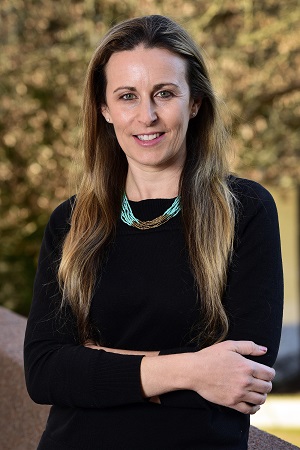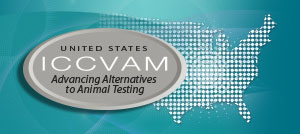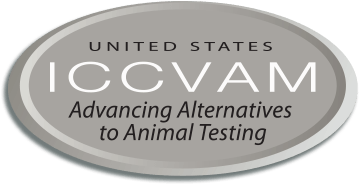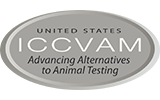Message from NICEATM and ICCVAM
On behalf of the Interagency Coordinating Committee on the Validation of Alternative Methods (ICCVAM) and the National Toxicology Program Interagency Center for the Evaluation of Alternative Toxicological Methods (NICEATM), we are pleased to present the 2022-2023 ICCVAM Biennial Progress Report.
The acceptance and application of new approach methodologies (NAMs) that can reduce and replace animal use while improving public health protection require multifaceted efforts in scientific innovation, development of new approaches to validation, and critical evaluation of current test methods. This report describes how ICCVAM agencies are actively engaged in all these activities. The ICCVAM Validation Workgroup recently published “Validation, Qualification, and Regulatory Acceptance of New Approach Methodologies,” which we hope will become a key resource for the evaluation of NAMs. Now that this document is available, ICCVAM members are supporting international application of these principles by contributing to the update of relevant guidance documents issued by the Organisation for Economic Co-operation and Development. Evaluation of current in vivo test methods is critical to ensuring that appropriate benchmarks are available for the validation of NAMs. This report describes efforts by NICEATM and ICCVAM to appropriately characterize the limitations of current test methods and sources of variability in their data.
NAMs produce data that can sometimes be challenging to interpret in a regulatory context, or that may rely upon complex computational models to produce information to support regulatory decisions. Over the past two years, ICCVAM, NICEATM, and ICCVAM agencies have worked together and with stakeholders to help make data readily available, characterize data quality appropriately, and provide tools to enable stakeholders to better understand those data. NICEATM has made improvements to the Open (Quantitative) Structure-activity/property Relationship App (OPERA) and the Integrated Chemical Environment (ICE) in response to stakeholder needs, and developed tools such as ChemMaps, STopTox, and DASS App to help stakeholders to explore and apply these data. Similarly, ICCVAM member agencies such as the U.S. Environmental Protection Agency and the U.S. Department of the Interior have developed computational tools tailored to the needs of their stakeholders and offered training to encourage their use.
ICCVAM agencies recognize the importance of communicating information needs and testing requirements to stakeholders, and over the past two years they have used different approaches to facilitate that communication. Five regulatory ICCVAM member agencies made or are making improvements to their webpages that discuss their testing requirements and options for alternatives to animal use. ICCVAM members contributed to publications that describe information needs for ecotoxicity and nanomaterials testing, and the newly formed ICCVAM PFAS Workgroup is considering federal agencies’ testing needs specific to per- and polyfluoroalkyl substances. The U.S. Food and Drug Administration (FDA) continued its webinar series that enables test method developers to interact with FDA centers to explore appropriate opportunities for application of new testing methods. They also offered programs for qualification of new development tools for drugs and medical devices. Finally, several ICCVAM agencies presented webinars or webinar series, either independently or in collaboration with other agencies or nongovernmental partners, to explore application of NAMs in a variety of regulatory and nonregulatory contexts.
We would like to acknowledge the contributions of the representatives and interagency workgroup members from the 17 ICCVAM member agencies, NICEATM and its contract staff at Inotiv, members of ICCVAM’s advisory committee, and our many other stakeholders. In particular we would like to thank John Gordon, Ph.D., U.S. Consumer Product Safety Commission, and Anna Lowit, Ph.D., U.S. Environmental Protection Agency, for serving as co-chairs of ICCVAM during the 2022-2023 reporting period. We recognize and appreciate their leadership and expertise, which were key to ICCVAM’s effectiveness. We thank them for their past contributions and look forward to their continued engagement with ICCVAM and service on ICCVAM workgroups.
The activities summarized in this biennial report exemplify ICCVAM’s ongoing commitment to working with U.S. and international partners to advance the development and acceptance of new scientifically valid test methods that will reduce and eventually replace animal use. These engagements, along with those of our many other stakeholders, are vital to ICCVAM, and we look forward to continued progress and effective interactions in the coming years.
Suzanne Fitzpatrick, Ph.D., DABT
Co-Chair, ICCVAM
Center for Food Safety and Applied Nutrition U.S. Food and Drug Administration
Natalia Garcia-Reyero Vinas, Ph.D.
Co-Chair, ICCVAM
U.S. Department of Defense
Nicole Kleinstreuer, Ph.D.
Director, NICEATM
Executive Director, ICCVAM
National Institute of Environmental Health Sciences

ICCVAM Co-Chair Suzanne Fitzpatrick, Ph.D., DABT

ICCVAM Co-Chair Natalia Garcia-Reyero Vinas, Ph.D.

NICEATM Director Nicole Kleinstreuer, Ph.D.



